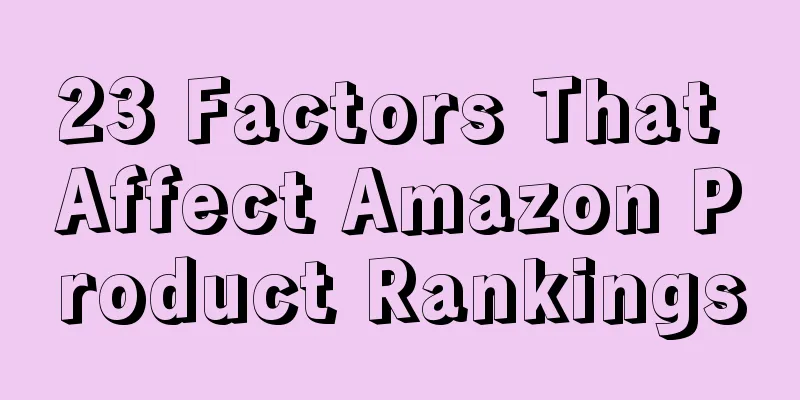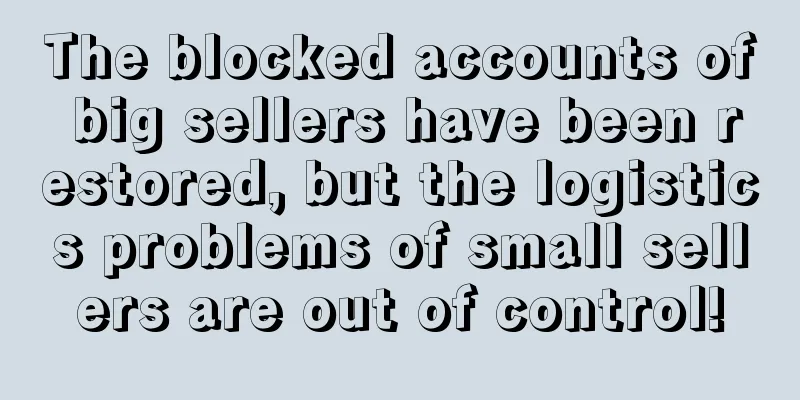23 Factors That Affect Amazon Product Rankings

|
Amazon sales volume is one of the most important ranking factors for Amazon. It calculates the sales of a product to determine its position in the Amazon search results page. Simply put, having a high historical sales volume compared to other products can make a product rank higher on Amazon's results page. For example, we enter the search box in Amazon: headset If you look at the top ranking products, you’ll notice that they all have a lot of reviews. In fact, 3 of the products have over 2,000 reviews, which shows that thousands of people have purchased these products. More sales then mean higher rankings, which leads to more sales. It’s a continuous positive cycle. What is a good sales rank on Amazon? If you visit a product page and scroll down until you get to the product details, you’ll find a little area called “Best Sellers.” This number essentially tells you how well this product ranks for searches in a specific category. For example, searching for "speakers" in a specific category of products will give you a list of product results, some of which will have a little logo like this one in the left corner of the product listing. How to improve Amazon ranking? Improving your Amazon product ranking is influenced by many parameters. This means that Amazon seller ranking is not the only factor that affects your ranking. Overall, you want to provide a good experience for your customers. This means that becoming a best-seller is not just about sales, your products have to be great; you have to have strong customer support and provide an overall good experience. However, rest assured that Amazon’s best-selling product ranking will also affect your sales. If you visit the best-selling products in any category, you will find that Amazon does take into account the number of sales of these products. However, it is important to understand that a large number of sales by itself does not mean anything. If you want to have a high sales ranking, you need to provide your customers with a good shopping experience. If you do this, over time, you will find that your ranking slowly improves. The number of product reviews is another important ranking factor. Of course, when selling products on Amazon, you shouldn’t expect all product reviews to be positive. This example of a product search for the keyword “vacuum” illustrates how Amazon weighs the quantity of reviews against the quality of the reviews: Let’s analyze this search results page.
The number of questions you answer – although not a direct ranking factor, it does affect conversion rates, and generally speaking, the more questions you answer, the better. For example, you’ll notice that in addition to having many product reviews, this product also has nearly 1,000+ answered questions. Image size and quality is another ranking factor. If you visit the pages of the best-selling products, you’ll notice that most have high-quality images that allow you to zoom in and take a closer look at some of the product’s details. The 1000×1000 pixel image size allows Amazon to offer customers the hover-to-zoom feature shown below, which has a significant impact on conversion rates. If you look closely at this image you will see that it has great clarity and depth. This means that the quantity of images is not as important as the quality. This is not to say that multiple images won’t convert better than one, it just means that the conversion effect decreases quickly after the first image. So, everyone, the quality of your main image really affects your product’s conversions. If you have one large, high-quality image, you will rank better than having multiple normal-sized images. We discussed in the previous introduction how Amazon’s ranking algorithm uses predicted and actual conversion rates to decide which products to show in search results? One of the biggest ranking factors Amazon uses to determine predicted conversion rates is price — they know that customers tend to look for the best deals. Amazon uses price as a major factor in choosing which product to show in the buy box, which is the part of the page that contains the “Add to Cart” button. You can notice that the top-ranked product for the search term “juicer” has fewer customer reviews, lower customer ratings, and a lower sales rank than the other top 3 products. But it’s still ranked first because it has decent ratings and is priced well below the average for similar products. It’s undeniable that product reviews are still important and price is not the only factor that determines product ranking. If you have one product listing (the parent) and decide to offer variations in color or size, these are called (children) and they will appear as variations in the same listing. A better approach is to use Amazon’s built-in parent-child product functionality to direct all customers to a single product page. The purpose of this is to:
As you can see in the picture above, you will notice that this product comes in many different colors. Amazon is able to measure every way a customer interacts with their website, so they can easily track how long customers stay on a page and the bounce rate from the website. If a visitor comes to your site and then exits quickly, it means that either she didn't find what she was looking for, or she found what she wanted but decided to pay next time. On the other hand, the longer a visitor stays on your site, the more likely she is to be interested in purchasing a product. The last factor that affects conversion rate ranking to optimize is the completeness of the listing, which is what most people call "product listing optimization." To make sure your product listing is [optimized enough], you can visit the product pages of some big brands to see how they optimize these parts. The more complete your Amazon product listing is, the better your chances of ranking higher on Amazon. If you have a new product, do your best to fill out every field on the listing setup page in order to maximize your chances of appearing at the top of product search results. In Google, you want a concise, catchy title that’s close to your keywords, whereas in Amazon, all you care about is keywords and keyword rankings. You want to cram as many keywords as possible into the approximately 80 characters of your product title. Another important reason why the Nexus charger ranks so high is that it has many high-conversion keywords and rich product descriptions. Just like pictures, the five-point description of a product is also very important, so much so that Amazon no longer allows products without five-point descriptions to appear in the gold shopping cart. And from the perspective of Amazon's algorithm, if your product's five-point description is inappropriate, it will not help the ranking of this product. Another example of a product that uses bullet points correctly is ASUS Computer Monitor, which ranks very highly for the term “computer screen”: From the above two examples, have you noticed that these five-point descriptions are both very detailed and contain a lot of keywords? And they are easy to read, which means they will not confuse customers and there is no risk of hurting product conversion rates. So, when you are writing five-point descriptions for your product, the most basic grammatical errors must not be there. Your product description is essentially where you expand on your product features, that being said, keep in mind that unlike Google, there is no benefit for a keyword to appear multiple times on a product page; if it appears at least once anywhere within your Amazon product page, then it will be relevant to the product’s ranking. If you want to see a truly enticing product description, take a look at this DeLhongi espresso machine, which is the top-ranked product for the term “espresso maker.” Another very important thing you need to include in your title is the brand name and manufacturer number. Every top-ranking product in the category will have the brand and manufacturer number listed first in the product title. Generally speaking, you should include your own brand name in your title if you register your own brand, as it makes your products search-filterable and allows you to attract customers who are searching for a specific brand. Product specifications are different from features - this is where the page lists the technical and physical details of your product, generally including information such as size, weight, color, technical specifications, etc. I don’t know if sellers have noticed this, but Amazon’s search results are displayed by category. For example, if you search for Speaker, the following red circle will appear: Search results are automatically limited to " Electronics : Portable Audio& Video ", unless the consumer changes it manually. Therefore, when creating a listing, the seller must list the product in the correct category. In addition to categories, you can also specify search terms that you want associated with your product. Although Amazon lists five different 50-character search term fields, it’s best to think of it as one big 250-character text box where you can type in all the possible search terms that customers might have for your product. This is one of the most important ways Amazon determines a listing’s relevance to a given product search. Customer Satisfaction Ranking Factors Why should I list negative seller feedback first instead of general seller feedback? Interestingly, Amazon actually claims that their algorithm does not track positive seller feedback, instead, they track the frequency of negative feedback from sellers. All negative feedback is the same, and it can be very detrimental to your product ranking when it comes to search result rankings. As a third-party seller, if you are trying to win the Buy Box for your product, then you definitely want your seller feedback to be as high as possible. However, negative feedback rate is the only metric that has an impact on product search results. Amazon naturally knows that one of the best ways to keep customers happy is to ship quickly and accurately. Therefore, the Amazon seller who shows consistent and efficient order processing is likely to rank higher. When customers want a product badly but can’t have it right away, they hate it. One of the most common ways this problem occurs is when an item is out of stock, or the seller does not properly track their product inventory, resulting in a stock-out situation. Two big customer satisfaction metrics are: percentage of orders refunded and premature order cancellations . In both cases, Amazon has found that sellers with low in-stock rates tend to have higher refunds and order cancellations, so as an Amazon seller, you need to always keep an eye on your product’s inventory status. Good Order Percentage is a measurement of how many orders go perfectly from the time the customer clicks "Add to Cart" to the time the product arrives at their door. If you have a high Good Order Percentage, it means you have a high in-stock rate, accurate product listings, and are able to ship on time. This is exactly what Amazon wants to provide to every customer, so they will naturally rank high-popularity merchants ahead of low-popularity merchants, so it will naturally affect the conversion rate of your products as well. Every time a customer files a claim on an order, it's considered a defective order. Here are some of the most common ways that problems can occur with orders:
Amazon states that the order defect rate target for all sellers should be below 1%, so it is very necessary to solve every problem of the customer. The time it takes a customer to exit Amazon from viewing your product listing is your exit rate. If your page has a higher-than-average exit rate, Amazon will consider it a sign that your product is not of high quality. Amazon has found that packaging options are something that customers care about. Even if they don’t, it’s a way to differentiate your listing from others. The way to solve this problem is to use Frustration Free Packaging. Amazon provides Frustration Free Packaging, which uses less material but can protect the product well, and the packaging materials can be recycled. This is the end of our introduction to the 23 factors that affect Amazon product rankings. |
>>: How to deal with Amazon listing being blocked and frozen products being removed from shelves
Recommend
What is Sellozo? Sellozo Review
Sellozo is an Amazon seller advertising optimizati...
Starting from scratch, Shopify sellers’ entrepreneurial stories series ④: Fulfilling orders, increasing sales and the final results
[Editor's Note] Sellers, do you want to know ...
36% of consumers will look for Christmas products on YouTube! Social advertising drives peak season sales in the United States!
<span data-shimo-docs="[[20,"获悉,根据全球媒体机构Ze...
When applying for a high-paying operations position at Amazon, and you are asked about keyword embedding methods, here is what you should say!
The peak job-hunting season of March and April 202...
What is Infibeam? Infibeam Review
Infibeam is an Indian internet and e-commerce grou...
What is No Deal Brexit? No Deal Brexit Review
A no-deal Brexit means that the Brexit agreement r...
What is Yitongda Overseas Warehouse? Yitongda Overseas Warehouse Review
Shenzhen Yitongda Overseas Warehouse Information T...
Thanksgiving 2021 US online sales reached $5.1 billion! The lowest expected value!
<span data-shimo-docs="[[20,"获悉,近日,根据Adobe...
What is Saramore? Saramore Review
Shenzhen Saramore E-Commerce Co., Ltd. ("Sara...
Shein launches platform model in Mexico, and may launch in Europe next
According to Reuters, on June 22, Shein announced ...
What is EPS? EPS Evaluation
EPS (Epstein Drangel LLP) is an American law firm ...
Mexico welcomes Christmas shopping boom! Online orders will increase by more than 70% year-on-year!
<span data-shimo-docs="[[20,"获悉,根据物流公司Simp...
Half-year revenue exceeds 1 billion! This hot-selling product has entered Amazon's Best Sellers!
▶ Video account attention cross-border navigation ...
What is FeedbackFive? FeedbackFive Review
FeedbackFive focuses on helping sellers manage buy...
Target's Q2 results are mixed! Revenue down but net profit up!
It is learned that on Wednesday (August 16), US re...









